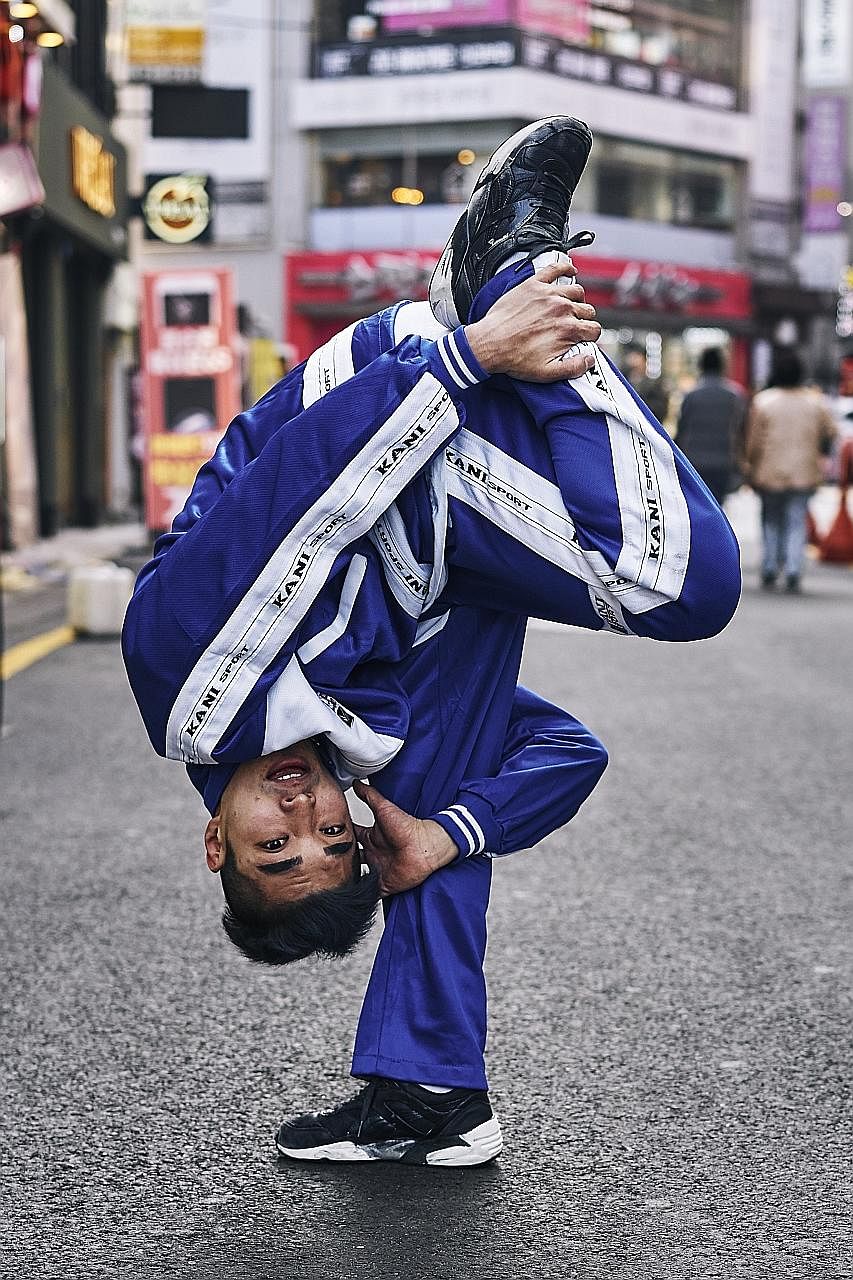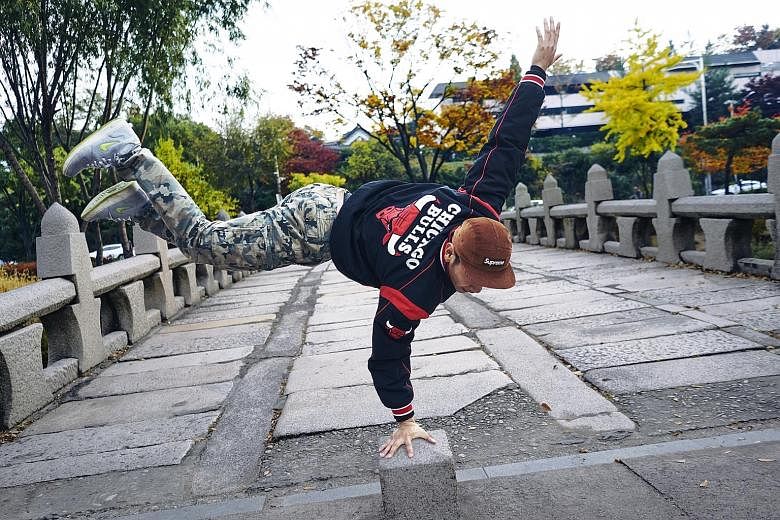NEW YORK • South Korea is known for many things: K-pop bands, inventive electronics and cult-like beauty products.
Break-dancing does not exactly come to mind, even though South Koreans have been a dominant force on the international B-boy scene for 15 years.
Originally founded in the 1970s, primarily by black and Puerto Rican youth in the Bronx, break-dancing was a catchall to incorporate an array of dances - toprock, downrock, power moves and freezes - performed during the break beats of hip-hop and funk songs.
American soldiers in expatriate-friendly Itaewon and other cities near military bases introduced the dance form to South Koreans in the 1980s, but it was a visiting Korean-American hip-hop promoter named John Jay Chon who is credited with spawning the B-boy explosion in Seoul.
In the late 1990s, Chon met a local group of urban dancers at a club and gave them a VHS tape of a Los Angeles break-dancing competition. He would later find out that the tape was duplicated hundreds of times. The rise of hip-hop as a global phenomenon, as well as the Internet and YouTube, stoked Koreans' interest further.
"Any country that's been colonised can relate to the ideas of hip-hop," said photographer An Rong Xu, who lives in New York and spent five days in Seoul with the city's elite break-dancers last month.
"Hip-hop was created so you could feel like you belonged and that is what these B-boys found. It's sort of like a religion for them."

Xu recognises that Seoul's B-boys have borrowed much more than music from American hip-hop, including the do-rags they wear along with their gestures and posturing.
Some may think of it as cultural appropriation, but he sees it as homage, or adaptation, noting that Korean B-boys have "taken what started in the Bronx and have adopted the style and culture and made something for themselves, that's unique to them".
Kim Cha Dol, aka Slam, said his personal style is influenced by the Eminem film 8 Mile (2002).
He connected with the blue-collar struggles portrayed in the film and the idea that, through an art form, you can pay tribute to and rise above your roots in the same breath.
Xu said that 8 Mile represents the idea that hip-hop is not about colour. "If anything, B-boys are actually the most diverse part of hip-hop culture. When there is a break-dancing competition, they invite the world."
B-boying is also an escape from the strict conservative culture and intense educational system that many Koreans find stifling and stressful.
Xu said that for South Korean B-boys, fashion and function work hand in hand. Beanies make it easier to spin on one's head. Nineties-style oversized sweatsuits allow for freer movement. Sneakers with thick soles are favoured for their durability.
In 2002, South Korea's Expression Crew won Battle of the Year, an international B-boy competition held annually in Germany. Korean crews such as Gamblerz, Last for One, Extreme Crew, Jinjo Crew and Fusion MC would all go on to take first place over the next decade.
B-boy culture became so popular that a live break-dancing musical, Ballerina Who Loved A B-Boy, opened in Seoul in 2005 and ran for nearly eight years. The South Korean government embraced B-boying in 2007 by sponsoring R16, an annual B-boy tournament and urban arts cultural festival.
Last year, R16 changed its name to Respect Culture and moved to Taiwan after the government withdrew funding.
Gamblerz, one of South Korea's most famous crews - they won the Battle of the Year in 2004 and 2009, are still active.
"They dance six to eight hours a day - B-boying is their life," said Xu, who photographed the Gamblerz-hosted Cypher Shock Battle at Hoseo Art School.
It is that intense dedication, along with impressive power moves, a common background in taekwondo and the country's unbridled passion for winning, that has made South Koreans so prolific.
And since men aged 18 to 35 are subject to two years of mandatory military service, B-boying is often a last chance to express their individuality before being forced into a stiff uniform.
One B-boy, Yu Beom Sang, aka Tyranny, put it best. When Xu asked about his dance uniform, he replied: "I call it freedom."
NYTIMES

